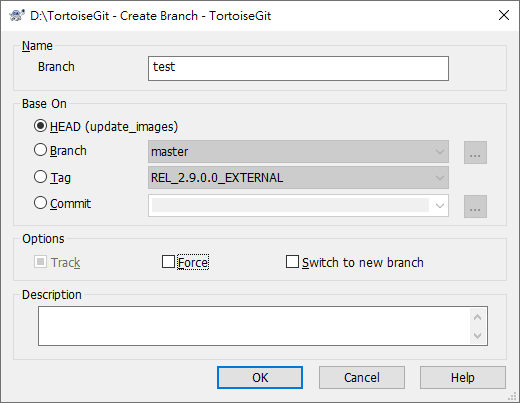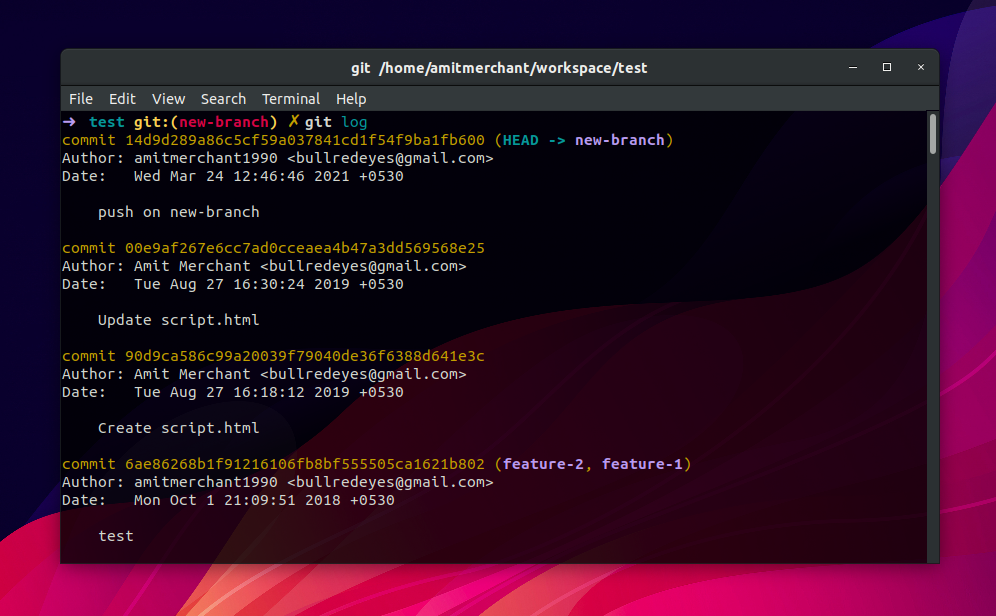
Consider that we have two branches- master and feature-with the chain of commits shown in Figure 4 below. But the old chain of commits still exists. New commits are created, and the appropriate pointer is moved to the new chain.

This means that, as long as we know the original commit we were pointing to, we can "restore" back to the previous point by simply resetting back to the original head of the branch: git reset Ī similar thing happens in most other operations we do in Git when commits are replaced.
#Git create branch from older commit code#
We moved the pointer and reset the code back to a previous commit, but it did not delete any commits. You may have noticed that the original chain of commits was still there after we did the reset. Then they can pull a fresh copy after the infringing operation without needing to merge. If you must make changes against code that has already been pushed and is being used by others, consider communicating before you make the changes and give people the chance to merge their changes first. In short, if you rollback, undo, or rewrite the history of a commit chain that others are working with, your colleagues may have a lot more work when they try to merge in changes based on the original chain they pulled. But avoid making changes that rewrite history if the commits have already been pushed to the remote repository and others may be working with them. This brings us to one of the fundamental rules when working with Git in this manner: Making these kinds of changes in your local repository to code you haven't pushed yet is fine. This is because the Git workflow works well for picking up additional commits at the end of a branch, but it can be challenging if a set of commits is no longer seen in the chain when someone resets the branch pointer back.

Why would you choose to do a revert over a reset operation? If you have already pushed your chain of commits to the remote repository (where others may have pulled your code and started working with it), a revert is a nicer way to cancel out changes for them. This can be done with a git revert command, such as: $ git revert HEADīecause this adds a new commit, Git will prompt for the commit message: If we add a line to a file in each commit in the chain, one way to get back to the version with only two lines is to reset to that commit, i.e., git reset HEAD~1.Īnother way to end up with the two-line version is to add a new commit that has the third line removed-effectively canceling out that change. The effect is most easily seen by looking at Figure 1 again. Where the reset command moves the branch pointer back in the chain (typically) to "undo" changes, the revert command adds a new commit at the end of the chain to "cancel" changes. The net effect of the git revert command is similar to reset, but its approach is different. Before you use the hard option, be sure that's what you really want to do, since the command overwrites any uncommitted changes. In effect, it resets (clears out) the staging area and overwrites content in the working directory with the content from the commit you reset to. This overwrites any local changes you haven't committed. Using these options can be useful in targeted circumstances such as git reset -hard .

These options include: hard to reset the commit being pointed to in the repository, populate the working directory with the contents of the commit, and reset the staging area soft to only reset the pointer in the repository and mixed (the default) to reset the pointer and the staging area.
#Git create branch from older commit update#
The git reset command also includes options to update the other parts of your local environment with the contents of the commit where you end up.


 0 kommentar(er)
0 kommentar(er)
